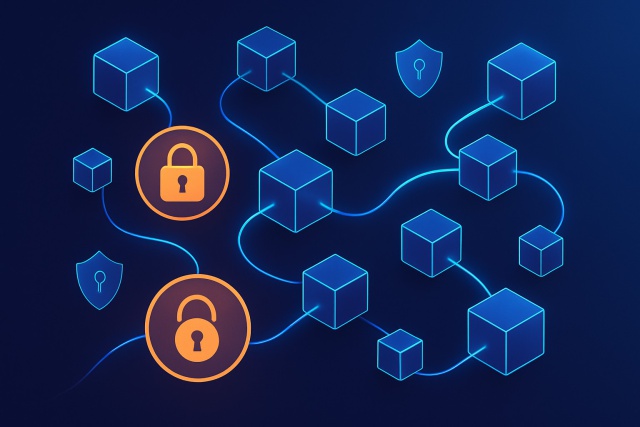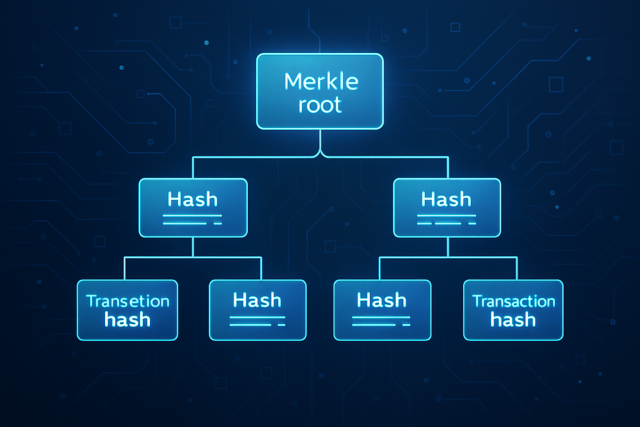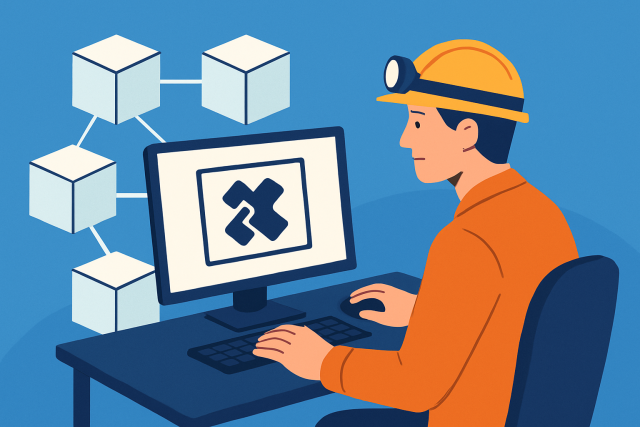How Does Blockchain Work in Simple Terms

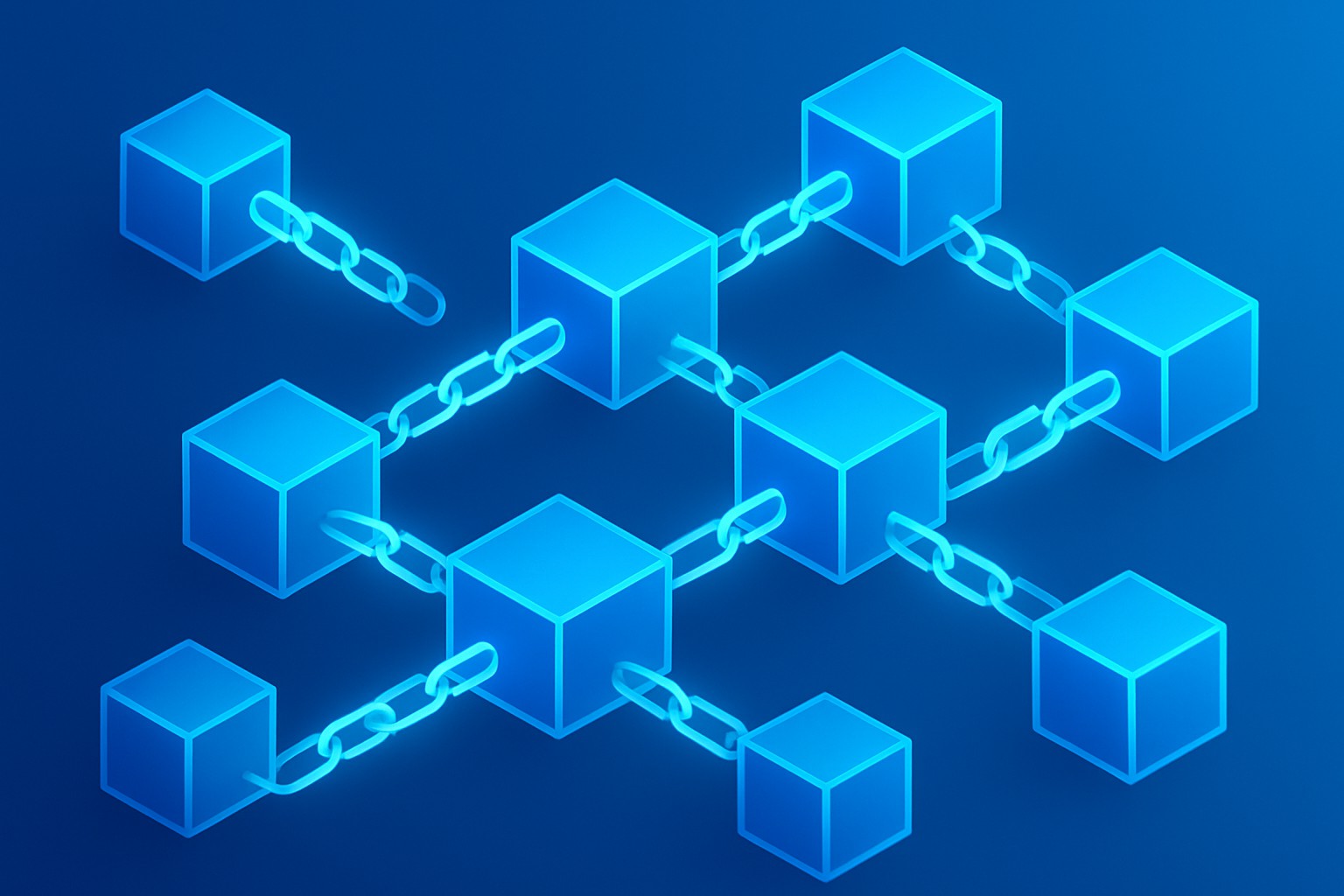
Blockchain is a term that a lot of individuals have heard tossed around, yet only a handful really get what it’s all about. This article lays out how blockchain works in plain, straightforward language—no heavy tech jargon weighing you down.
It’s worth taking a moment to appreciate why blockchain really matters. Sure, Bitcoin and other cryptocurrencies get most of the spotlight but blockchain technology opens fresh ways to securely record information and share data transparently. It helps build trust in digital systems without relying on a central authority.
So, what exactly does Blockchain mean?
Blockchain is basically a one-of-a-kind digital ledger. It locks down data by bundling it into blocks that link up in a chain—that’s where the name comes from.
Imagine a shared notebook anyone can peek into and jot down notes on but once something’s written, it’s set in stone—no erasing allowed. Each page is like a fresh batch of new entries. Every one references the page before it, creating a neat chain of records. Everyone holds onto their own copy so if someone tries to alter an older page, the rest will catch it right away and give it the cold shoulder.
The Essential Parts of Blockchain You Should Know About
- Blocks that gather data all in one spot making it easy to keep track
- Transactions that log events on the blockchain like an unbreakable receipt
- Cryptographic hashes that guard and link each block together kind of like a digital glue
- Decentralized networks where a whole bunch of computers work together to maintain the ledger no single boss in charge
- Consensus methods that help everyone get on the same page about which data actually counts preventing any funny business
Blocks carry transaction data that can be a simple cryptocurrency transfer or a complex contract. Transactions are basically records that capture these actions in detail. Cryptographic hashes act like digital fingerprints that uniquely protect each block and securely tether it to the previous one. Thanks to the decentralized network, independent computers each keep their own copy of the blockchain which makes it resilient.
How Blockchain Works, Step by Step A Friendly Walkthrough
Understanding how blockchain works becomes a lot less daunting when you start at the very beginning—a transaction—and follow it all the way through to the point where that data is safely tucked away in the shared ledger.
Someone kicks off a transaction whether it is sending cryptocurrency or logging some data—it's the starting point.
This transaction then gets broadcast across the blockchain network where countless computers aka nodes catch the news.
The special nodes called miners or validators roll up their sleeves to verify that the transaction is the real deal.
Once given the green light these verified transactions are neatly bundled into a block.
The new block gets added to the blockchain but only after the entire network gives a collective nod of approval.
Finally the updated blockchain is shared so everyone on the network is rocking the latest version of the ledger.
Think of miners as referees in a game who make sure every play (transaction) follows the rules before it counts. Once they have checked enough plays, they jot them down on a fresh page (block) in the shared notebook everyone has. Since everyone holds a copy of this notebook, the moment a new page is added and agreed upon it becomes part of the official record for all to see.
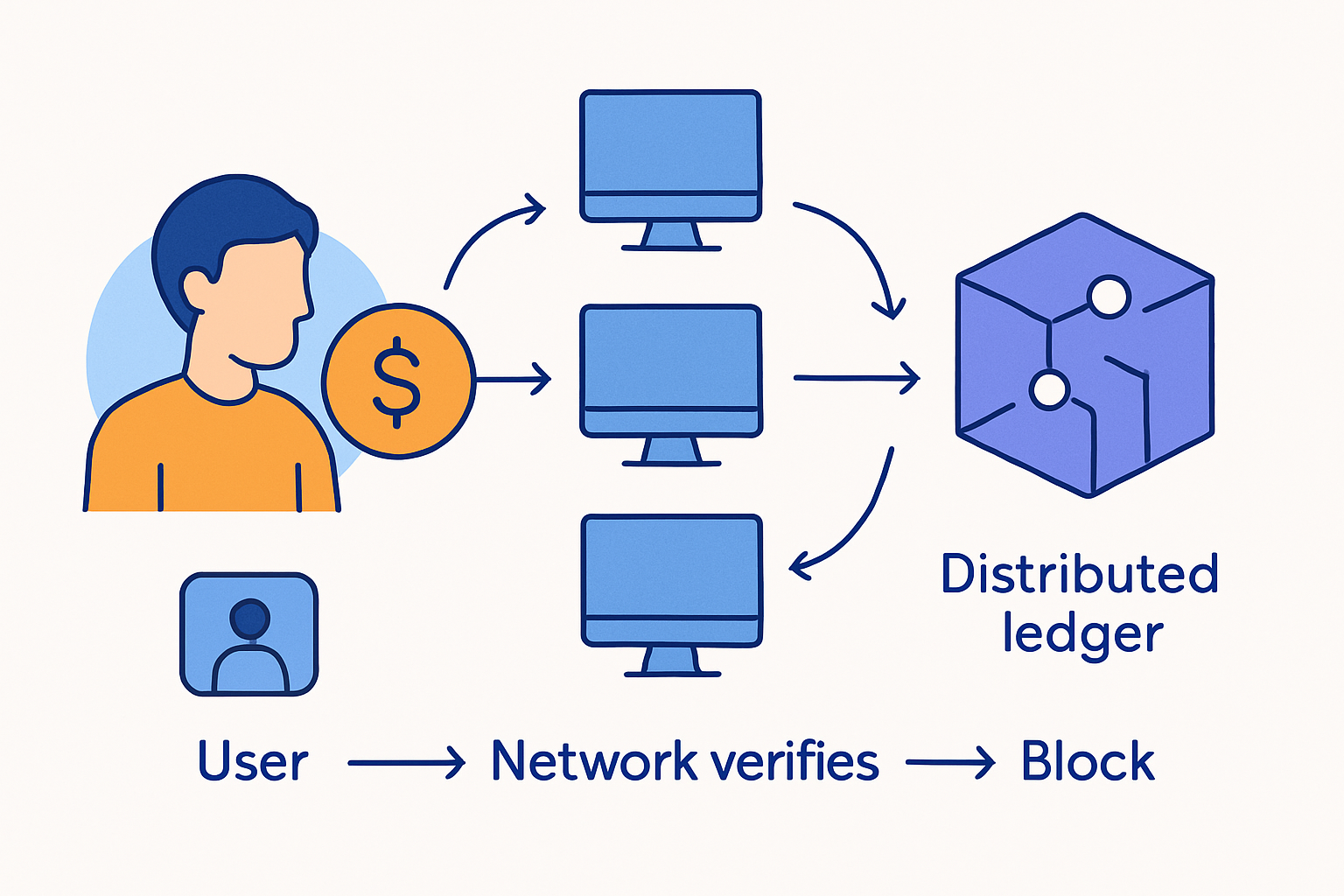
What Really Keeps Blockchain Secure
Blockchain leans heavily on cryptographic hashes to lock down data inside each block. Each block stores a hash from the previous one, weaving a tight-knit chain that’s tough to break. Change even the smallest bit of data in a block, and its hash flips throwing a wrench into the whole chain and sending up a big red flag to the network.
- Hash functions create unique digital fingerprints for your data like a signature you cannot forge
- Decentralization means there’s no single boss or weak link in the system and control is spread far and wide
- Consensus algorithms like Proof of Work or Proof of Stake verify and secure data to make sure everyone is playing by the rules
- Network transparency lets anyone peek under the hood to see the blockchain’s current state and keeps things honest and open
These features work together to put the brakes on any unauthorized changes. Since there are plenty of copies that have to see eye to eye before a single change goes through, it’s pretty much a no-go for anyone trying to mess with the data unnoticed.
"> Picture blockchain security like a chain of locked safes all linked together. If you wanted to sneak a peek or change what’s inside just one safe, you’d first have to crack open every single safe before it—which, in real life, is about as likely as spotting a unicorn on your morning jog. This clever setup really does a solid job of keeping your data both safe and trustworthy."
Different Types of Blockchains
When diving into the world of blockchain, it quickly becomes clear that not all chains are created equal. There’s a whole spectrum of different blockchains out there, each with its own quirks and strengths. Whether you’re a newbie or have been around the crypto block a few times, understanding these types can really help make sense of this often confusing space.
Blockchain networks typically break down into three main categories: public, private and consortium. Public blockchains are pretty open-door and let just about anyone hop on board. Private blockchains keep things more exclusive by only allowing selected participants to join the party. Then there’s consortium blockchains that function like a joint venture and are governed by a handpicked group of organizations.
| Blockchain Type | Access Level | Participants | Advantages | Common Uses |
|---|---|---|---|---|
| Public | Open to anyone | Anyone can join and verify | Brings a high level of decentralization and transparency to the table, which is quite the crowd-pleaser | Often the go-to choice for cryptocurrencies like Bitcoin and those buzzworthy NFTs |
| Private | Limited access | Controlled by a single organization | Delivers quicker transactions and a nice boost in privacy, perfect when you want things wrapped up tight | Usually the backbone of enterprise solutions and internal data management where secrecy matters |
| Consortium | Managed by a group | Multiple organizations involved | Finds a sweet spot balancing control with privacy, sort of the best of both worlds | Popular in the realms of banking and supply chain collaborations, where teamwork really counts |
Practical Examples of Blockchain in Action That Actually Make a Difference
Beyond the buzz around cryptocurrencies blockchain quietly lends a hand in some practical real-world scenarios like tracking supply chains and verifying identities. It also locks down voting systems and makes self-executing smart contracts work. These applications use blockchain's knack for transparency and security to tackle challenges across fields like finance and healthcare.
- Bitcoin and other cryptocurrencies offer an intriguing way to create decentralized money with no middlemen and peer-to-peer transactions that have shaken things up
- Supply chain transparency isn’t just a buzzword because it helps verify where products come from and cuts down on fraud headaches
- Secure voting systems aim to be tamper-proof and crystal clear while restoring trust in an area that often makes people uneasy
- Health records can be shared safely among providers while letting patients keep control which is a huge relief for privacy
- Decentralized finance or DeFi offers financial services without relying on traditional banks. This is shaking up how we think about money and lending
- Digital collectibles like Non-Fungible Tokens (NFTs) bring unique digital assets to life and make ownership in the digital world feel real
Blockchain ramps up transparency by keeping a public record that is hard to mess with. It tightens security thanks to cryptography and earns trust by cutting out the usual middlemen.
Frequent Misunderstandings About Blockchain That People Often Trip Over
A lot of individuals tend to mix up blockchain with Bitcoin or think it magically guarantees complete anonymity. Then there are those who assume blockchain is forever slow and expensive, like a snail dragging a wallet.
- Blockchain isn’t just about cryptocurrencies. It’s also changing logistics and identity management and is more versatile than many people think.
- Transactions aren’t always completely hidden. Many blockchains operate pseudonymously so activity can often be traced back with some investigation.
- Scalability has been challenging. However, clever solutions like Layer 2 chains and new consensus algorithms are steadily increasing speed and reducing costs.
- Concerns about environmental impact and energy use are valid. Thankfully, the technology is evolving and making the process greener and more sustainable bit by bit.
Grasping these points helps cut through the noise and see what’s hype versus what’s actually solid. Blockchain is that rare kind of technology that’s not just sitting still—it’s constantly evolving, adapting to new challenges on the fly. It keeps stretching its benefits further, all the while tackling its own limitations with a mix of innovation and some thoughtful design.
So, How Can You Really Dive Into the World of Blockchain?
Individuals and businesses alike often turn to simple no-nonsense tools and platforms when diving into the world of blockchain. Whether they are juggling cryptocurrency or dabbling in decentralized apps or amassing digital assets, getting their hands on blockchain has become much more user-friendly and down-to-earth.
- Setting up and navigating cryptocurrency wallets to hold and move digital currencies with ease
- Jumping into buying, selling and trading cryptocurrencies on various exchanges because timing can be everything
- Exploring blockchain-based apps for fun and useful stuff like finance, gaming or social networking
- Browsing and snagging NFTs that stand for one-of-a-kind digital treasures you won’t find anywhere else
- Getting involved in decentralized finance (DeFi) services like lending or staking which can feel like your money working while you kick back
If you are curious about diving into blockchain technology, a good first step is picking a wallet or exchange platform you can really trust. It pays off to dig a little deeper and stick to solid security practices to keep your assets locked down tight.



